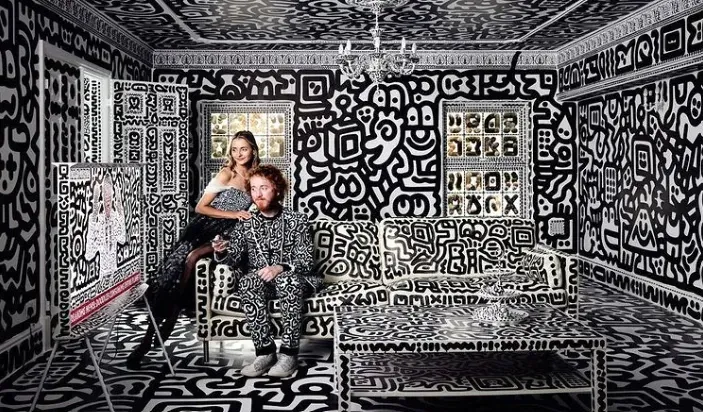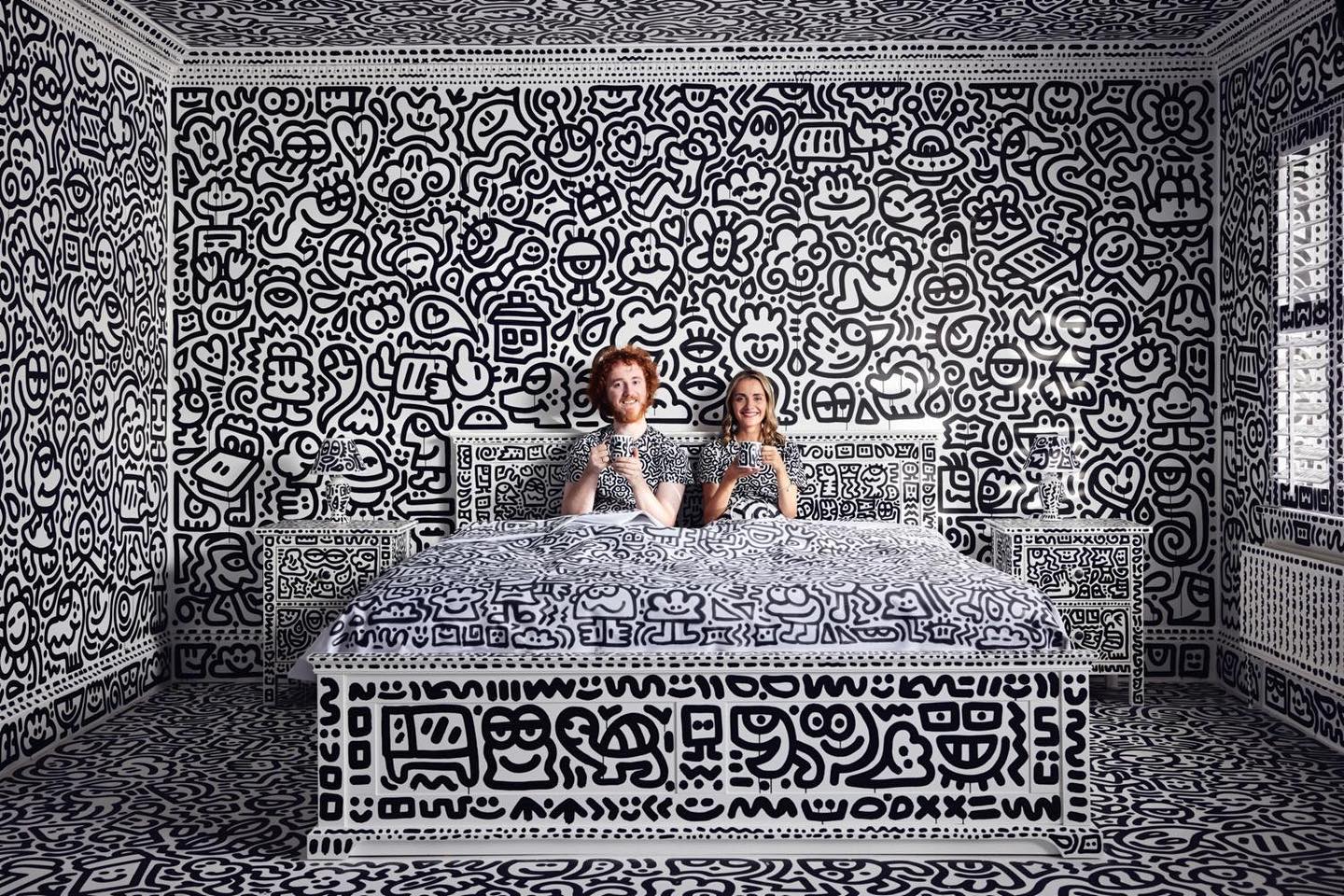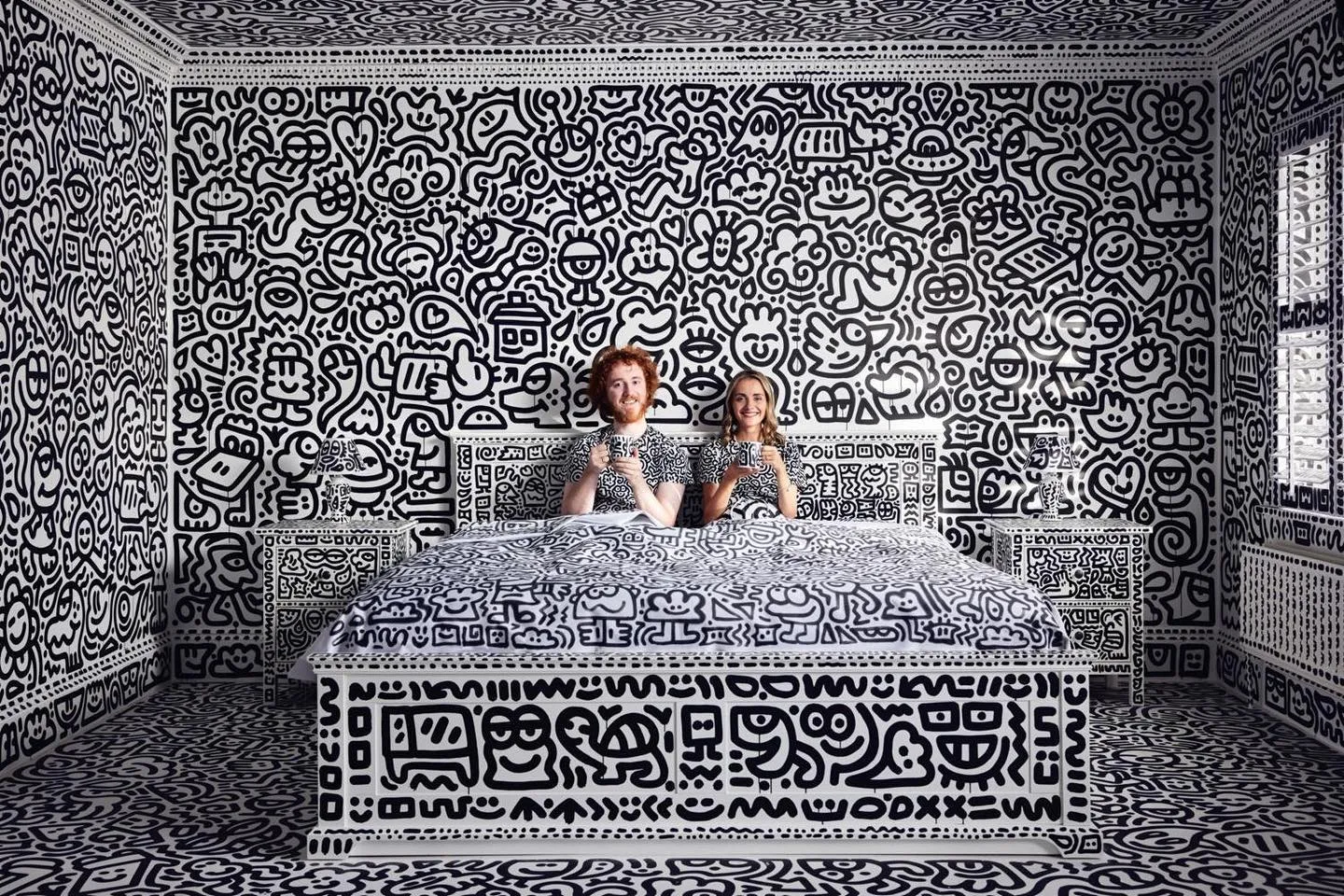How Creative Individuality Can Make You Go Viral

Real estate is usually all about ‘location, location, location’. And yet, the activities of British artist Sam Cox has shifted the dialogue around that this month.
His house has gone viral, ensnaring the attention of the world’s media – not to mention his 2.7 million followers on Instagram via his handle Mr. Doodle.
Why?
Cox has doodled his way into fame by completely re-imagining every surface of his home – inside and out – with his signature ‘squiggles’.
He has recently announced the two year project was complete (taking pandemic lockdown to a whole new level!), with him and wife Alena using 900 litres of white paint, 401 cans of black spray paint, 286 bottles of black drawing paint and 2,296 pen nibs – to do the job.
But it is a much deeper story of self-styled stardom. Where this story gets interesting is Cox’s “use of social media. On 2 October he simply tweeted, I doodled my house” – however, it was the stop animation video attached that has caused it to go viral – 8.7 million views viral!
Cox started the time lapse in September 2020, constructed from some 2,000 plus images. We see before our eyes his $2.67 million (£1.35 million) mansion - located in Tenterden near Kent, in England - transform from a white canvas to an intense black and white form of self-expression.
Apparently the original owners of the house had initially pleaded with him to not cover it in his signature cartoon-like graffiti, as revealed in an interview with the Evening Standard.
Social media replacing galleries
Before Sam Cox started posting on social media, he was little known as an artist.
The trajectory of his ‘identity’ over the past eight years has been phenomenal. In an earlier interview, Cox told Artnet News that he created his alter ego in December 2014,”when he was still an ambitious but somewhat unassuming student in the illustration program at the University of West England in Bristol.”
Today, the 26-year-old artist has not only made his art a brand – but also a lifestyle. He is always seen clad in his own designs, his wardrobe central to his public and social media persona.

Sam Cox - AKA Mr Doodle. Photo: Mr Doodle Instragram,
Mr Doodle first became a social media trend in 2017 - this time on Facebook. He shared a video of the 60-plus hours he spent doodling the full interior of a vacant shop next to London’s Old Street Underground station. (He has 736,000 Facebook friends, and about 82,000 subscribers to his YouTube channel).
Cox told Artnet that the performance “brought me a whole new audience for my work and led to big new opportunities.”
Artnet writer Doriann Batycka comments “the trajectory of Mr. Doodle’s career has become a case study in how to make it in the art world without a massive gallery or team of art advisors backing you.”
The rest is ‘history’ - as they say.
Mr Doddle has gone on to be the subject of memes, merchandise, invitations to international exhibitions, projects for MTV Europe and Puma, and even success under the hammer at auction houses (Sotheby’s Hong Kong 2019, 2020 and 2021) – usually the terrain of blue chip markets.
Artnet News states Cox’s market success had resulted in nearly $5.3 million in sales across three continents in a little more than nine months.
One of those markets has been the Asian market, tipped over with a 2018 solo exhibition at the Ara Art Centre in Seoul titled Doodle World.
He told Artnet this was when “my work began to receive interest from collectors”, demonstrating that the transition from social media success to museum can happen, despite our cynical views.

Black and white bliss - Mr and Mrs Doodle in their distinctive home. Photo: Alun Callender via Mr Doodle Instagram.
Another artist that has tracked from street to market is KAWS, who has a history of project with the National Gallery of Australia, and earlier – from a time when social media wasn’t around but social connection and hype similarly played a role – was the work of Keith Haring, who Cox is often compared to graphically.
Fame, clearly has a price, but one suspects it is also hard work to maintain and live with … especially when there is no escape.
This article was originally published by our friends at Artshub Australia.
Written by Gina Fairley.

